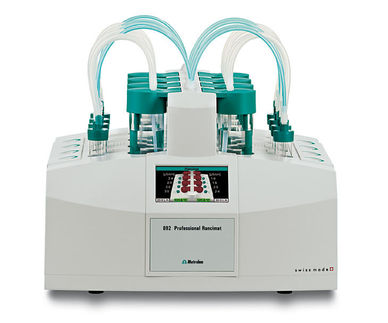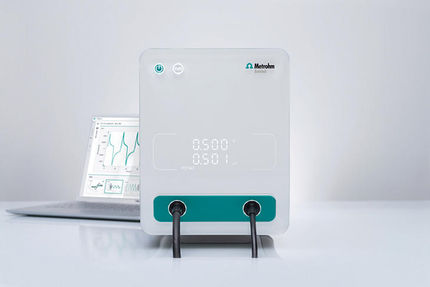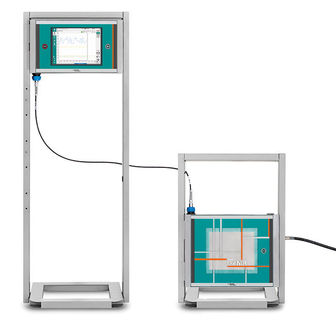To use all functions of this page, please activate cookies in your browser.
my.chemeurope.com
With an accout for my.chemeurope.com you can always see everything at a glance – and you can configure your own website and individual newsletter.
- My watch list
- My saved searches
- My saved topics
- My newsletter
Haplogroup J2 (Y-DNA)In human genetics, Haplogroup J2 (M172) is a Y-chromosome haplogroup which is a subdivision of haplogroup J. Product highlightHaplogroup J2 is widely believed to be associated with the spread of agriculture from the northern Fertile Crescent, the Levant, and Anatolia ,. This connection is supported by its age (8,500 +/- 3,500 thousand years ago) [2], which is very close to the beginning of the Neolithic, its distribution, which is centered in West Asia and Southeastern Europe, as well as its association with the presence of Neolithic archaeological artifacts, such as figurines and painted pottery . DistributionHaplogroup J2 is found mainly in the northern Fertile Crescent, the Mediterranean (including Southern Europe and North Africa), the Iranian plateau and Central Asia.[1], in Greece and Italy and Balkan]], and more frequently in Kurdistan 28% of the population (semino et al),Iraq 25% of the population,, in Lebanon 25% of the population, in Jordan, in Syria , Palestine in [2], in Turkey [1], and in the southern Caucasus region . According to Semino et al and the National Geographic Genographic Project, the frequency of haplogroup J2 generally declines as one moves away from the Northern fertile crescent. Haplogroup J2 is carried by 6% of Europeans and its frequency drops dramatically as one moves northward away from the Mediterranean. Sephardic Jews have roughly twice as much J2 as J1 and Ashkenazi Jews have a near equal proportion of J1 and J2 haplogroup markers. (Behar et al.) J2 (M-172) is divided into eight sub-Haplogroups defined by mutations M12/M102, M47, M67/M92, M68, M137, M158, M339, and M340 (see Diagram), four of which occur at informative frequencies[1][2], The less-heterogeneous J2 (J-M172), which occurs as frequently as J1( J-M267) in some Middle Eastern populations, is the more prevalent in Europe. J-M102 illustrates population expansions from the southern Balkans. J-M67 is most frequent in the Caucasus (Georgia) , and J-M92, which indicates affinity between Anatolia and southern Italy. Whereas J-M67* and J-M92 show higher frequencies and variances in Europe and in Turkey. Likewise, J-M47 and J-M68 characterize very few Near Eastern and Asian samples.[1] In Italy, one of the European countries with the highest frequencies of J2, it has been found in the remains of ancient Etruscans,[citation needed] who spoke a non-Indo-European language of unknown affinity. Another important fact about the distribution of Haplogroup J2 is that it appears to have dispersed from a Middle Eastern homeland to the west through a primarily maritime or littoral route, as it is found in high concentrations among the populations of the coasts of the Mediterranean Sea in both Eurasia and Africa, and particularly along the coasts of the eastern Mediterranean in Europe. This distribution may be more consonant with a Neolithic or post-Neolithic maritime dispersal from the Middle East, such as through Phoenician[citation needed] commercial and colonial activities, or even through Greek colonization. Turkey is one of the countries with major J2 population. About 25% of Turkish men are J2 according to a recent study [1]. Combined with J1, one third of the total population of Turkish people belongs to Haplogroup J. Typically, modern populations of the southern Middle East (especially Arabic-speaking ones) have a higher frequency of the related haplogroup J1, whereas the great majority of Haplogroup J representatives among the populations of the Northern Middle East, Lebanon, Europe, and India belong to the subclade J2. Haplogroup J2 has been shown to have a more northerly distribution in the Middle East when compared to its brother haplogroup, J1, which has a more southerly distribution. This suggests that, if the occurrence of Haplogroup J among modern populations of Europe, Central Asia, and South Asia does reflect Neolithic demic diffusion from the Middle East, the source population is more likely to have originated from Anatolia, the Levant or northern Mesopotamia than from regions further south. . SubdivisionsHaplogroup J2 is subdivided into two complementary sub-haplogroups: J2a, defined by the M410 genetic marker, and J2b, defined by the M12 genetic marker. A subclade of haplogroup J2a, defined by the M92 marker has been implicated in the ancient Greek colonization . The subclades of Haplogroup J2 with their defining mutation, according to the 2006 ISOGG tree:
References
|
|||||||||||||||||||||||||||||||||||||||||||||||||||||||||||||||||||||||||||||||||||||||||||||||||||||||||||||||||||||||||||||||||||||||||||||||||||||||||||||||||||||||||||||||||||||||||||||||||||||||||||||||||||||||||||||||||||||||||||
| This article is licensed under the GNU Free Documentation License. It uses material from the Wikipedia article "Haplogroup_J2_(Y-DNA)". A list of authors is available in Wikipedia. | |||||||||||||||||||||||||||||||||||||||||||||||||||||||||||||||||||||||||||||||||||||||||||||||||||||||||||||||||||||||||||||||||||||||||||||||||||||||||||||||||||||||||||||||||||||||||||||||||||||||||||||||||||||||||||||||||||||||||||







